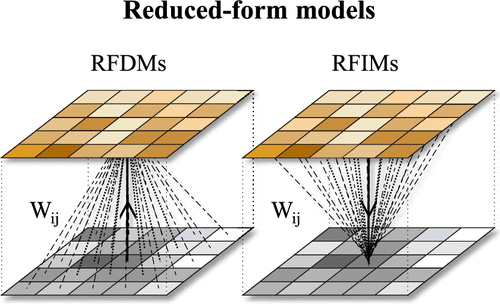当前位置:
X-MOL 学术
›
Environ. Sci. Technol.
›
论文详情
Our official English website, www.x-mol.net, welcomes your
feedback! (Note: you will need to create a separate account there.)
Direct and Inverse Reduced-Form Models for Reciprocal Calculation of BC Emissions and Atmospheric Concentrations
Environmental Science & Technology ( IF 10.8 ) Pub Date : 2021-07-23 , DOI: 10.1021/acs.est.1c02174 Xinyuan Yu 1 , Qirui Zhong 1 , Wenxiao Zhang 1 , Wenjun Meng 1 , Xiao Yun 1 , Haoran Xu 1 , Huizhong Shen 1 , Guofeng Shen 1 , Jianmin Ma 1 , Hefa Cheng 1 , Bengang Li 1 , Junfeng Liu 1 , Shu Tao 1
Environmental Science & Technology ( IF 10.8 ) Pub Date : 2021-07-23 , DOI: 10.1021/acs.est.1c02174 Xinyuan Yu 1 , Qirui Zhong 1 , Wenxiao Zhang 1 , Wenjun Meng 1 , Xiao Yun 1 , Haoran Xu 1 , Huizhong Shen 1 , Guofeng Shen 1 , Jianmin Ma 1 , Hefa Cheng 1 , Bengang Li 1 , Junfeng Liu 1 , Shu Tao 1
Affiliation

|
Atmospheric black carbon (BC) concentrations are governed by both emissions and meteorological conditions. Distinguishing these effects enables quantification of the effectiveness of emission mitigation actions by excluding meteorological effects. Here, we develop reduced-form models in both direct (RFDMs) and inverse (RFIMs) modes to estimate ambient BC concentrations. The models were developed based on outputs from multiyear simulations under three conditional scenarios with realistic or fixed emissions and meteorological conditions. We established a set of probabilistic functions (PFs) to quantify the meteorological influences. A significant two-way linear relationship between multiyear annual emissions and mean ambient BC concentrations was revealed at the grid cell scale. The correlation between them was more significant at grid cells with high emission densities. The concentrations and emissions at a given grid cell are also significantly correlated with emissions and concentrations of the surrounding areas, respectively, although to a lesser extent. These dependences are anisotropic depending on the prevailing winds and source regions. The meteorologically induced variation at the monthly scale was significantly higher than that at the annual scale. Of the major meteorological parameters, wind vectors, temperature, and relative humidity were found to most significantly affect variation in ambient BC concentrations.
中文翻译:

用于倒数计算 BC 排放和大气浓度的直接和逆简化模型
大气黑碳 (BC) 浓度受排放和气象条件的控制。区分这些影响可以通过排除气象影响来量化减排行动的有效性。在这里,我们开发了直接(RFDMs)和逆向(RFIMs)模式的简化模型来估计环境 BC 浓度。这些模型是基于在具有现实或固定排放和气象条件的三个条件情景下多年模拟的输出而开发的。我们建立了一组概率函数(PF)来量化气象影响。在网格单元尺度上揭示了多年年排放量与平均环境 BC 浓度之间显着的双向线性关系。它们之间的相关性在具有高发射密度的网格单元中更为显着。给定网格单元的浓度和排放也分别与周围区域的排放和浓度显着相关,尽管程度较小。这些依赖是各向异性的,取决于盛行风和源区。月尺度的气象诱发变化显着高于年尺度。在主要气象参数中,发现风向量、温度和相对湿度对环境 BC 浓度的变化影响最为显着。虽然程度较轻。这些依赖是各向异性的,取决于盛行风和源区。月尺度的气象诱发变化显着高于年尺度。在主要气象参数中,发现风向量、温度和相对湿度对环境 BC 浓度的变化影响最为显着。虽然程度较轻。这些依赖是各向异性的,取决于盛行风和源区。月尺度的气象诱发变化显着高于年尺度。在主要气象参数中,发现风向量、温度和相对湿度对环境 BC 浓度的变化影响最为显着。
更新日期:2021-08-03
中文翻译:

用于倒数计算 BC 排放和大气浓度的直接和逆简化模型
大气黑碳 (BC) 浓度受排放和气象条件的控制。区分这些影响可以通过排除气象影响来量化减排行动的有效性。在这里,我们开发了直接(RFDMs)和逆向(RFIMs)模式的简化模型来估计环境 BC 浓度。这些模型是基于在具有现实或固定排放和气象条件的三个条件情景下多年模拟的输出而开发的。我们建立了一组概率函数(PF)来量化气象影响。在网格单元尺度上揭示了多年年排放量与平均环境 BC 浓度之间显着的双向线性关系。它们之间的相关性在具有高发射密度的网格单元中更为显着。给定网格单元的浓度和排放也分别与周围区域的排放和浓度显着相关,尽管程度较小。这些依赖是各向异性的,取决于盛行风和源区。月尺度的气象诱发变化显着高于年尺度。在主要气象参数中,发现风向量、温度和相对湿度对环境 BC 浓度的变化影响最为显着。虽然程度较轻。这些依赖是各向异性的,取决于盛行风和源区。月尺度的气象诱发变化显着高于年尺度。在主要气象参数中,发现风向量、温度和相对湿度对环境 BC 浓度的变化影响最为显着。虽然程度较轻。这些依赖是各向异性的,取决于盛行风和源区。月尺度的气象诱发变化显着高于年尺度。在主要气象参数中,发现风向量、温度和相对湿度对环境 BC 浓度的变化影响最为显着。











































 京公网安备 11010802027423号
京公网安备 11010802027423号